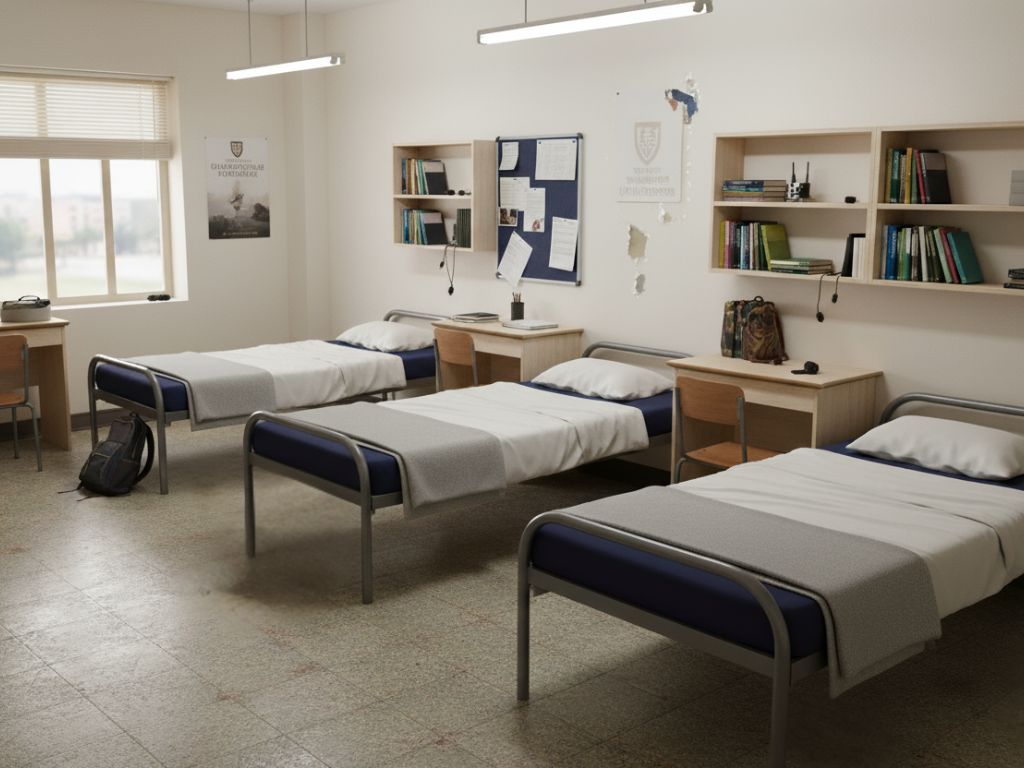Introduction
Across camps, hospitals, dormitories, and shelters, a quiet revolution is happening in bedding choices. More organizations are transitioning to the nylon mattress—a durable, hygienic, and cost-efficient solution that’s redefining comfort in shared and commercial spaces. The move toward institutional mattresses made of nylon isn’t just a trend; it’s a practical response to growing demands for hygiene, longevity, and ease of maintenance in high-use environments.
Understanding the Nylon Mattress
A nylon mattress is designed specifically for heavy-duty institutional use. It features a supportive foam or spring core encased in a tough, flexible nylon cover. This cover is not only durable but also water-resistant, allowing the mattress to resist spills, moisture, and staining.
Unlike traditional fabrics, nylon doesn’t absorb fluids. It creates a protective layer that simplifies sanitation, making it an ideal option for facilities where mattresses are used frequently by different individuals. This unique structure makes the nylon mattress a trusted choice for settings such as hospitals, dormitories, camps, and correctional facilities—places that require consistent hygiene and reliability.
1. Built for Institutional Durability
In institutional environments, bedding faces challenges that far exceed normal home use. Mattresses must withstand daily wear, frequent cleaning, and constant handling. A nylon mattress offers the durability to handle it all.
Nylon’s high tensile strength and tear resistance mean the material won’t crack, peel, or degrade over time. This toughness allows each institutional mattress to perform well for years, even in settings with high occupancy turnover. The long lifespan reduces replacement costs, helping organizations save on budget without compromising quality.
2. Hygiene That Meets Modern Standards
For many institutions, hygiene is the top priority—and that’s where the nylon mattress truly excels. Its smooth surface prevents the absorption of sweat, spills, or bodily fluids, minimizing bacterial and fungal growth.
Because it’s water-resistant bedding, cleaning becomes quick and simple: a wipe with a disinfectant is enough to restore freshness. This efficiency is especially important in hospitals, rehabilitation centers, and shelters, where sanitation protocols must be followed rigorously and efficiently.
By preventing cross-contamination and maintaining a hygienic surface, the nylon mattress supports healthier environments and helps organizations meet strict safety and cleanliness standards.
3. The Antimicrobial Advantage
Modern nylon mattresses often incorporate antimicrobial properties, transforming them into an antimicrobial mattress solution that actively resists bacteria, mold, and odors. The antimicrobial coating provides continuous protection, ensuring the mattress remains sanitary even with prolonged use.
For dormitories, healthcare institutions, and temporary housing, this feature is invaluable. It not only enhances hygiene but also extends the usable life of the product by preventing material degradation caused by microbes. The antimicrobial mattress has become a symbol of modern institutional care, where comfort and safety coexist.
4. Resistant to Moisture, Stains, and Odor
A key advantage of the nylon mattress lies in its water-resistant bedding properties. The nylon cover acts as a shield, repelling liquids and blocking moisture from penetrating the mattress core. This not only keeps the internal foam dry but also prevents odors, mildew, and mold from forming over time.
For camps, dorms, and rescue missions—where quick turnover and unpredictable conditions are the norm—this feature provides both practicality and peace of mind. It ensures that each mattress remains clean, fresh, and safe for the next occupant.
5. Compliance with Institutional Safety Standards
In environments like healthcare facilities, firehouses, and correctional institutions, safety compliance is non-negotiable. Most nylon mattresses meet or exceed federal flammability and safety regulations, such as CFR 16 Part 1633.
This makes them suitable for any institutional mattress application where regulations dictate strict adherence to fire-retardant and hygiene standards. Nylon also resists static buildup and can be produced with low-smoke, non-toxic materials—critical for environments where occupant safety is paramount.
6. Comfort Without Compromise
While the primary goal of an institutional mattress is functionality, comfort still matters. The nylon mattress is built with supportive foam that promotes healthy posture and minimizes discomfort, even with long-term use.
Unlike older materials that can feel stiff or sticky, nylon’s flexible texture adjusts slightly to body movement, offering a comfortable yet firm surface. The cover’s subtle breathability ensures a cooler sleep environment, preventing overheating during use—something that’s appreciated by campers, patients, and students alike.
7. Low Maintenance and Cost Efficiency
Operational costs can add up quickly in large facilities, making maintenance efficiency crucial. The nylon mattress shines here as well.
Its water-resistant bedding design allows for quick daily cleaning, reducing labor time and the need for frequent deep washes. Because the material resists wear, there’s no need for costly repairs or early replacements. For budget-conscious institutions, this translates into substantial long-term savings.
Moreover, the product’s long life span means fewer mattresses end up in landfills, contributing to more sustainable facility operations. In this way, nylon mattresses not only benefit users but also align with broader environmental and financial goals.
8. Ideal for a Wide Range of Applications
The adaptability of the nylon mattress makes it a versatile choice across industries:
- Camps and Outdoor Programs: Withstands humidity and outdoor conditions while remaining easy to clean.
- Student Housing and Dormitories: Offers durability, comfort, and cleanliness under frequent use.
- Hospitals and Rehabilitation Centers: Function as an antimicrobial mattress that meets clinical hygiene standards.
- Shelters and Emergency Housing: Provides affordable, hygienic, and quick-to-sanitize bedding.
- Correctional and Government Facilities: Meets fire and safety requirements while maintaining comfort.
Each of these use cases demonstrates how nylon bedding seamlessly fits into institutional settings that value both practicality and human comfort.
9. Supporting Sustainability and Efficiency
In an era where sustainability is a growing priority, the nylon mattress offers a responsible bedding choice. Its long lifespan and recyclable materials mean fewer replacements, less waste, and reduced environmental impact.
Facilities that adopt durable, antimicrobial mattresses benefit from products that require fewer cleaning chemicals, use less water, and demand less energy for maintenance—all aligning with green operational practices.
By choosing a nylon institutional mattress, organizations support not only better health outcomes but also a more sustainable future.
Conclusion
The transition toward the nylon mattress represents a smarter, more sustainable approach to institutional bedding. With its combination of antimicrobial protection, water-resistant bedding features, and unmatched durability, nylon stands out as the best choice for facilities focused on safety, hygiene, and comfort.
From camps to hospitals, every organization that values cleanliness, resilience, and efficiency is making the same decision—embracing the nylon mattress as the modern standard for quality institutional sleep systems.

